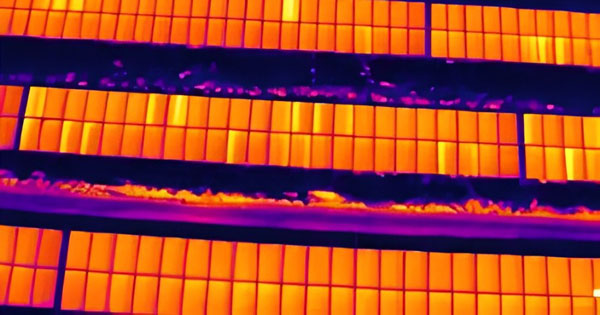Impact of 12 thermal defects on power generation in PV systems

PV module is the main unit of PV system to generate electricity, its function is to convert sunlight into electricity, if there is an abnormality that affects the conversion efficiency of PV module, the conversion of light energy into electricity will become less, according to the principle of conservation of energy, then additional thermal energy will be generated, which is what we call thermal defects. In other words, the existence of thermal defects will affect the power generation of the system. With reference to IEC 62446-3, thermal defects are categorized into the following 12 types according to the causes of thermal defects and their subsequent treatment:
| NO. | Thermal defect | Impact of PV module power | Remark |
|---|---|---|---|
| 1 | Modules in open circuit | 100% | The module does not generate power |
| 2 | Modules in short circuit | 100% | The module does not generate power |
| 3 | Broken front glass | 15.47% (rough estimate) | Apply the upper limit of the hot spot power loss |
| 4 | Substring in short circuit | 33.33% | 1/3 module does not generate power |
| 5 | One substring in open circuit | 33.33% | 1/3 module does not generate power |
| 6 | Two substrings in open circuit | 66.66% | 2/3 module does not generate power |
| 7 | Single cell with difference in temperature | 8.15% (average) | Overseas research on hot spot effect on power range: 0.83%~15.47% |
| 8 | Module with cells shaded | 8.15% (average) | Overseas research on hot spot effect on power range: 0.83%~15.47% |
| 9 | Bird dropping or dust | 8.15% (average) | Overseas research on hot spot effect on power range: 0.83%~15.47% |
| 10 | Transfer resistance at cell connections | 0.83% (rough estimate) | Apply the lower limit of the hot spot power loss |
| 11 | Heated module junction box | 0.83% (rough estimate) | Apply the lower limit of the hot spot power loss |
| 12 | Potential Induced Degradation | 50% (average) | Overseas research PID effect on power range: 30%~70% |
The table also lists the estimated power loss associated with each type of thermal defect in solar modules. The values are based on relevant international studies. For example, hot spots can cause a power loss ranging from approximately 0.83% to 15.47%, while potential-induced degradation (PID) can reduce module output by about 30% to 70%. When glass breakage occurs, it can lead to severe cell cracks. High resistance in cell interconnections or overheating of junction boxes can create lower temperature differentials similar to those of hot spots; therefore, their power loss estimates are modeled after the upper and lower limits of the hot spot power loss range. In the cloud-based visualization platform IRUAV APP by IRUAV Technology, the inspection report clearly shows the detection rates of these thermal defects within the site and provides corresponding maintenance recommendations.
It is worth noting that the above calculation method does not take series–parallel connections of modules into account, making it a relatively conservative way to estimate power loss. In reality, any abnormal module will affect other modules in the same string. For example, a module with broken glass, in addition to creating hot spots, may pull down the current of the entire string or, due to insulation resistance issues, cause the inverter to trip or start up late. This impacts a wider range of modules and tends to worsen over time. Therefore, once thermal defects are detected, early remediation is the best course of action.